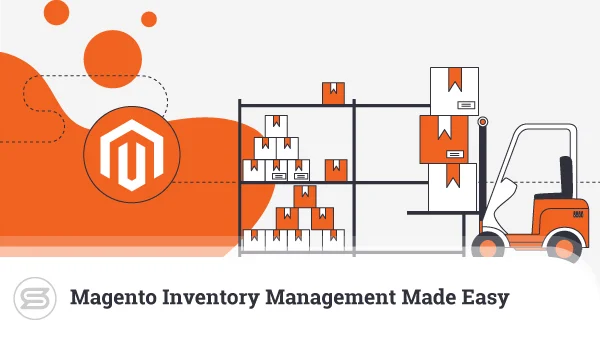Edge Computing for Real-Time Ecommerce Experiences
Not many people are familiar with edge computing. It might sound fancy and difficult to understand, but we’re here to clear it up for you!
Edge computing is an information technology that brings data storage and computation closer to where they are needed. In other words, it provides faster data transmission and reduced latency in traditional cloud-based systems. It processes data at the “edge” of the network (near the source of the end-user) and reduces the time it takes that information to get to centralized servers.
Thus, edge computing allows businesses to process data and deliver it to end-users in record time. As such, this piece of technology is extremely beneficial for ecommerce companies as it makes websites much faster, which, in turn, makes the shopping and ordering experience better for the consumer.
This technology is also useful for immediate data analysis and decision-making. For example, edge computing enables rapid processing of sensor data to ensure timely responses to dynamic driving conditions in autonomous vehicles. It also facilitates predictive maintenance and enhances operational efficiency in IoT (Internet of Things) apps.
In this article, we’ll dive deeper into how edge computing can give ecommerce businesses a competitive edge and take them to the top of fast and efficient customer service. Let’s get the party started!
Introduction to Edge Computing and Ecommerce Real-Time Experiences
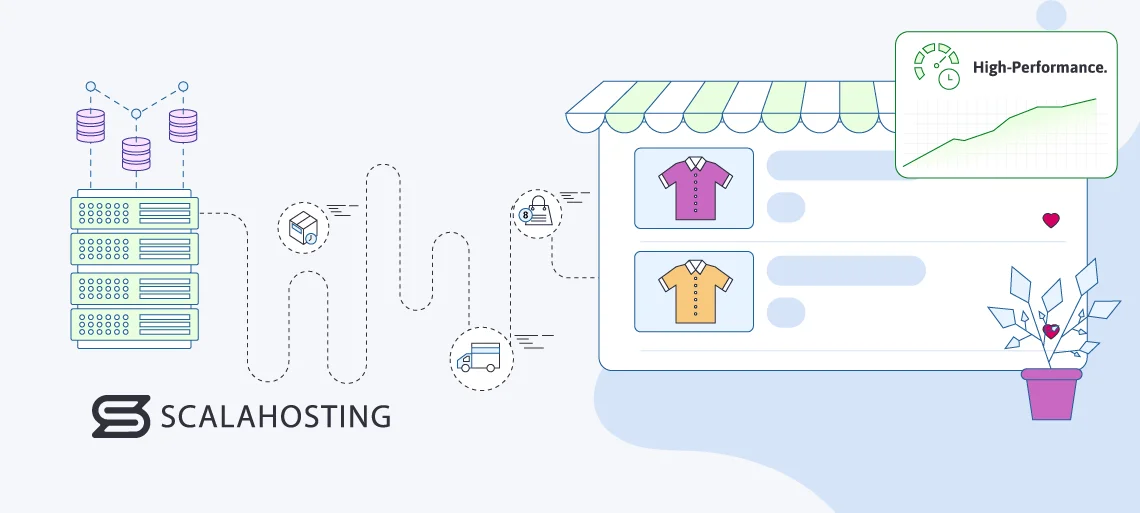
Edge computing processes data near the physical location where it is generated. So, suppose a customer clicks on a page on your website while being located somewhere in Europe. In that case, edge computing will process the data near the customer’s location and display the page faster instead of processing and sending it from the area where your main server is located.
This approach also reduces latency, minimizes bandwidth usage, and enhances the overall performance of your website.
Role in Delivering Fast and Responsive Digital Experiences
This technology plays an important role in providing fast and responsive digital experiences by solving several challenges found in traditional cloud computing.
Let’s see why:
- Latency Reduction: Edge computing significantly reduces the time it takes for data to travel back and forth between the client and the server because it processes information closer to the source. This is crucial for apps that demand immediate feedback, like online gaming, video conferencing, and augmented reality. It’s also extremely beneficial for ecommerce as it provides customers with a much better shopping and browsing experience.
- Bandwidth Optimization: It decreases the volume of data that needs to be transmitted to and from central servers. This eases network congestion and lowers the costs associated with data transfers, which can rack up pretty fast in other circumstances. It also allows you to save on web hosting because you won’t need as much bandwidth as you would without using edge computing.
- Enhanced Privacy and Security: Processing data locally at the edge can reduce the risk of breaches and enhance privacy. That’s because sensitive information doesn’t need to travel across the network to a central server in order to be processed.
- Reliability and Resilience: Edge computing can function even when the connection to the central server is unstable or interrupted. This provides much greater reliability and allows your business to run as planned. It also allows you to stop missing out on sales due to downtime or technical issues.
Enhancing Real-Time Interactions in Ecommerce
As mentioned, edge computing can lead to improved customer experiences and operational efficiencies because it provides the following:
- Personalized Shopping Experiences: It enables real-time data processing and analysis and allows ecommerce platforms to simultaneously deliver personalized content, product recommendations, and offers. For instance, as a customer browses a website, edge servers analyze their behavior and preferences in real time to dynamically update the webpage they’re on with relevant product suggestions. So, if someone is looking for shoes but then switches to bags, the server will pick up the change immediately and start recommending bags based on what the customer is looking at.
- Faster Load Times: All ecommerce businesses can benefit greatly from faster load times because slow website loading speeds can lead to higher bounce rates and lost sales. Edge computing can ensure that web pages load quickly by caching content closer to the customer and processing requests at the edge.
- Enhanced Augmented Reality (AR) Experiences: The technology can power AR apps by processing data locally. It also enables real-time rendering of AR features like virtual try-ons or in-store navigation. This immediate feedback enhances user engagement and satisfaction.
- Efficient Inventory Management: Edge computing is also great for companies that have both online and brick-and-mortar stores. That’s because it can facilitate real-time inventory tracking and management. Namely, edge devices can quickly process sales and inventory data to ensure stock levels are accurately reflected across all channels. This will prevent stockouts and over-selling.
- Improved Customer Support: Quality service, products, and customer support are the bread and butter of the ecommerce world. Edge computing can help businesses improve their support as the technology can offer real-time support to customers. They can process questions and generate responses locally, providing instant assistance and enhancing the overall customer service experience.
- Secure Transactions: Since edge computing handles transactions closer to the end user, it enhances financial data security and reduces the risk of breaching or interception during transmission.
Understanding Edge Computing Basics
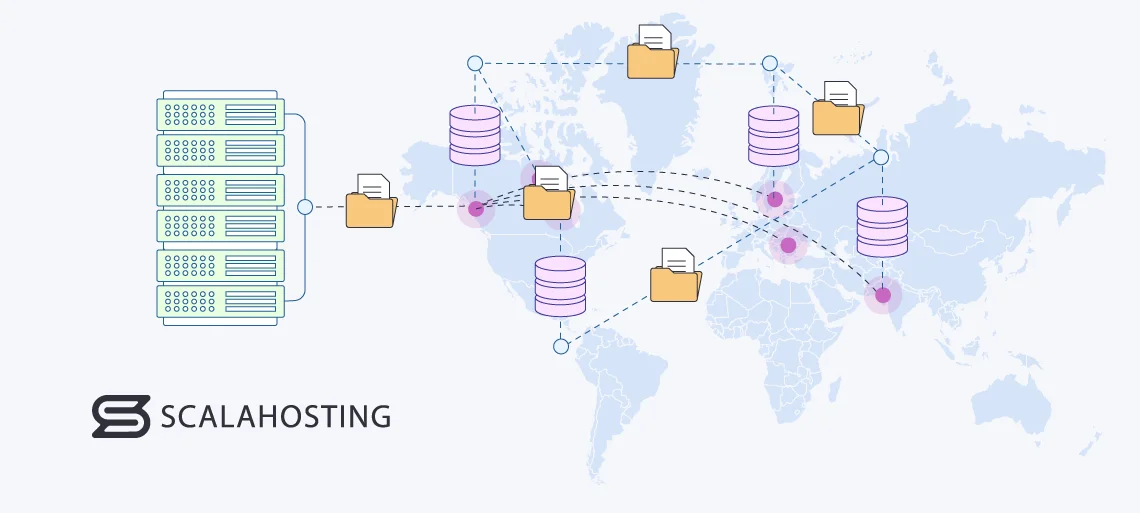
Decentralization is the future for many sectors, including data processing, data analysis, and ecommerce. Edge computing is the leader of this trend as it veers from the traditional centralized model to a more decentralized approach. Here’s an overview of how this decentralized approach works and its key components:
Decentralized Data Processing
- Proximity to Data Sources: When we say that data processing occurs near the information sources, we mean near devices like sensors, mobile phones, local servers, or IoT devices. This proximity reduces the latency associated with transferring data to and from centralized data centers. It also enables real-time or near-real-time analysis and decision-making.
- Local Processing Units: Edge computing uses local processing units, like micro data centers, edge servers, and edge gateways. These units handle data processing tasks independently or in collaboration with other edge devices. This reduces their dependency on a central cloud infrastructure.
- Scalability and Flexibility: This technology allows for scalable and flexible resource deployment. As the demand for processing power increases, you can add additional edge nodes without the need to significantly upgrade central infrastructure. This scalability supports all kinds of apps and growing data volumes.
Key Components of Edge Computing
- Edge Devices: These are the primary data generators, such as cameras, sensors, and IoT devices. They collect information from the environment and can perform basic processing tasks like aggregation and filtering.
- Edge Gateways: These devices act as intermediaries between edge devices and the central cloud. They handle data processing, storage, and transmission, performing encryption and protocol conversion tasks to ensure secure and efficient communication.
- Edge Servers and Micro Data Centers: These are local data centers that provide substantial computing power and storage capacity near the edge. They can process complex analytics, run apps, and store information temporarily or permanently, reducing the load on central cloud servers.
- Central Cloud: Central clouds are still necessary for edge computing. They are crucial for tasks that require significant computational power, long-term input storage, and global data analysis.
Bringing Computation Closer to the Data Source
As you now know, the whole purpose of edge computing is bringing computation closer to the data source to reduce latency, decrease risk, and enhance performance and processing times. This fundamental principle aims to address the limitations of traditional cloud computing, where data must travel long distances to centralized servers for processing.
Here’s how it works:
Latency
Latency shows the time delay between a person’s action and the response from the system or website. It’s the time it takes for a click of a mouse to turn into a webpage or whatever else someone might want to access. This delay can occur at multiple stages in computing:
- Transmission: The time it takes for data to travel from the source to the server.
- Processing: The time it takes for the server to process the data requested by the user.
- Response: The time it takes for the processed data to travel to the user or device.
Approach to Reducing Latency
Edge computing addresses latency by decentralizing the data processing architecture and bringing computation closer to the source.
Here’s how this is achieved:
- Local Processing: The technology processes the data locally or near the generation source instead of sending all information to a centralized cloud server. This is done through edge devices, gateways, or local micro data centers with storage and computation capabilities.
- Minimizing Data Travel Distance: Edge computing cuts down on transmission latency by reducing the physical distance data needs to travel. For example, data generated by a phone in Eastern Europe can be processed by a micro data center located there instead of the main website data center that might be on a different continent.
- Real-Time Analytics: Local processing leads the way to real-time data analytics and decision-making. It allows your website to offer better product recommendations and more personalized content for your visitors.
- Bandwidth Efficiency: Processing data locally reduces the amount of information that needs to be transmitted over the network. This conserves bandwidth and minimizes delays caused by network congestion.
Practical Applications
- Self-Driving Vehicles: These vehicles generate massive amounts of data from sensors and cameras that need real-time processing to navigate safely. Edge computing enables this.
- Industrial Automation: Factories that use IoT devices use edge computing to monitor machinery in real time, perform predictive maintenance, and optimize production processes on the spot.
- Smart Cities: Urban infrastructure, like traffic lights and surveillance cameras, relies on computing to process data locally for immediate responses, such as adjusting traffic signals based on real-time traffic conditions.
- Healthcare: Edge computing can process data from medical devices locally to provide instant analysis and feedback, which is critical for patient monitoring and emergency response.
- Ecommerce: Personalized content, more accurate product recommendations, better customer support, and faster load times are just some of the things that edge computing brings to the ecommerce sector.
Benefits of Edge Computing for Ecommerce
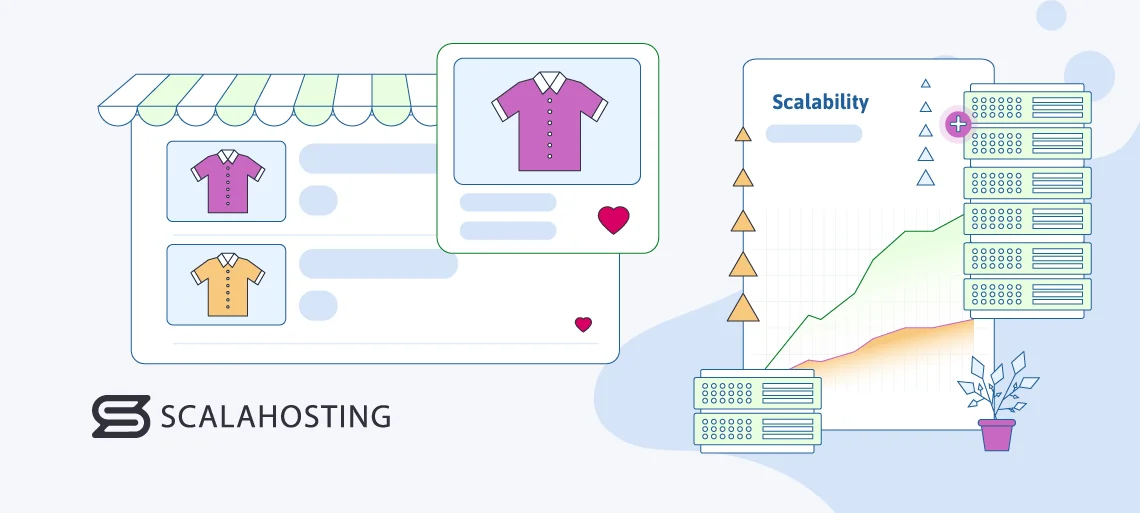
Some of the key advantages that all ecommerce businesses can gain from edge computing include the following:
- Reduced Latency: We’ve mentioned this quite a lot, but it is still not enough to reflect the importance that latency has on online businesses. People nowadays don’t have the patience to wait for a website to load and want to browse seamlessly and open everything they’re interested in immediately. That’s precisely what edge computing offers.
- Improved User Experience: The latency reduction and real-time processing capabilities of edge computing provide ecommerce businesses with a smoother and more responsive shopping experience. Users can browse, search, and complete transactions more efficiently, leading to higher satisfaction and increased customer loyalty.
- Enhanced Personalization: Real-time analysis of user behavior and preferences is one of the features that edge computing has in its pocket. This allows businesses to deliver personalized recommendations, offers, and content instantly. Customers get a tailored UI that reflects their interests and browsing history, leading to increased engagement, higher conversion rates, and more sales.
- Real-Time Inventory Management: Edge computing can update inventory stats in real time across all of your sales channels. This allows you to always keep your stock levels up-to-date and prevent scenarios where customers order out-of-stock items.
- Better AR/VR Integration: This technology can easily support the high-performance requirements of augmented reality (AR) and virtual reality (VR) applications. It also reduces latency and provides a seamless and immersive experience, which is crucial for both AR and VR.
- Efficient Bandwidth Usage: Since edge computing devices process data locally, they reduce the amount of information that needs to be sent to centralized cloud servers. This significantly decreases bandwidth usage and lowers costs associated with data transmission.
- Scalability: Edge computing allows ecommerce platforms to scale more efficiently. You can deploy additional edge nodes during peak seasons, like holidays or sales events, to handle increased traffic and ensure your website remains responsive and available.
- Reliability and Resilience: This computing technology distributes data processing tasks across multiple edge nodes. This decentralized approach reduces the risk of a single point of failure and ensures continuous operation even if some of the nodes go offline.
Last but not least, it offers better customer support. This type of computing powers more efficient and responsive chatbots and virtual assistants by processing interactions locally. This results in faster response times and better customer support, enhancing the overall service quality and customer satisfaction.
Fusing Web Hosting and Edge Computing
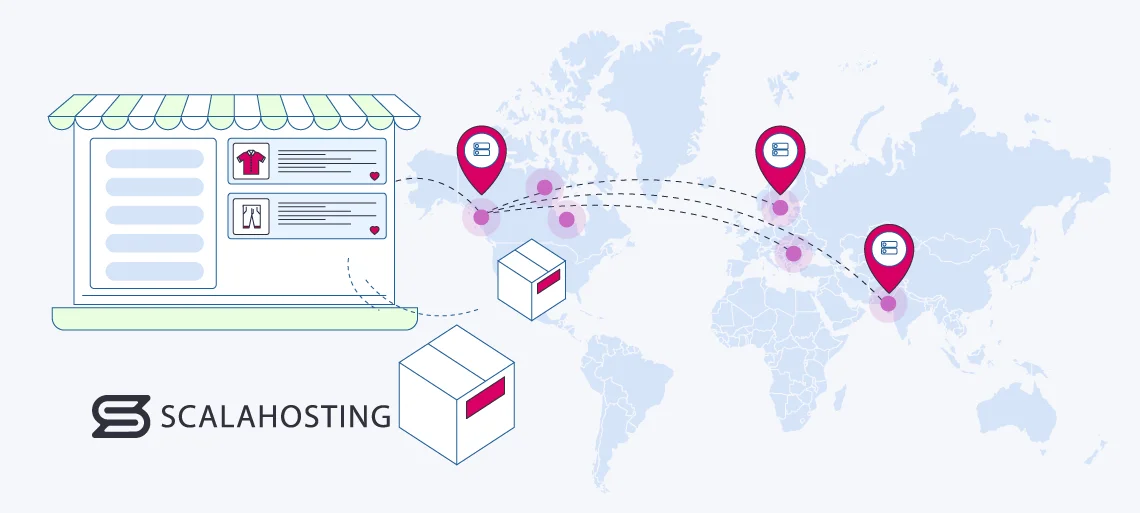
Most modern web hosting services have their own data centers all over the world and use CDNs (Content Delivery Networks) to further boost the speed they provide. Couple that with edge locations, and you’ll get a lightning-fast website that’s available for everyone and has super-low bounce rates.
So, a reliable and powerful web host, a CDN, and edge locations are the ingredients that you need to take your ecommerce to the next level. But now the following question arises: How do you find a web host that has reliable data centers and gives you access to a CDN? Well, we found one for you – ScalaHosting.
We offer everything you need to make the most out of edge computing and a wide range of other great perks to boot. Namely, our managed VPS plans are perfect for those who want to incorporate edge computing into their operations, as they come with unmetered bandwidth, scalable resources, generous storage options, and CloudFlare integration.
CloudFlare is a top-tier CDN and the go-to option for many online businesses. Having access to it via your web host will make the whole process of speeding up your website and using edge computing a whole lot easier than if you had to do everything alone.
With ScalaHosting, you’ll get all the ingredients you need to gain a significant competitive advantage over other ecommerce businesses.
Conclusion
It’s clear that edge computing takes ecommerce to a whole new level. From faster loading times and lower latency to enhanced customer support and a better user experience, edge computing can take your business from the shadows to the light.
In order to use this technology efficiently, you need a reliable web host that also offers access to a high-quality CDN. One such provider is ScalaHosting, an OG in the hosting space that is always on the lookout for innovations and improvements. Not only do we offer excellent services for edge computing and website hosting, but we also have our own web hosting control panel that will make managing your site(s) much easier and faster.
The control panel is called SPanel. It is an all-in-one management platform that offers everything you need to manage your day-to-day operations and grow your business.
Frequently Asked Questions
Q: How Does Hosting Infrastructure at the Edge Support Personalized Recommendations?
A: The hosting infrastructure supports personalized recommendations by enabling real-time data processing and analysis close to the user. This proximity reduces latency and allows for immediate collection and processing of user interactions and preferences.
As the person browses an ecommerce website, edge servers can quickly analyze their behavior and update recommendations dynamically.
Q: Why Is Localized Content and Geo-Targeting Important for Ecommerce Businesses?
A: Both features enhance user relevance and engagement. For starters, localized content allows businesses to deliver content tailored to the customer’s location, such as language, currency, and local offers. This, in turn, creates a much more personalized shopping experience for each customer.
On the other hand, geo-targeting allows organizations to create targeted marketing campaigns, promotions, and ads that resonate with local customs and preferences. Consequently, it increases the likelihood of conversion and builds customer trust and loyalty.
Q: What Are the Security Implications of Data Processing at the Edge?
A: One security concern when it comes to data processing at the edge is the potential for increased attacks due to the distributed nature of edge devices. Thus, ensuring secure data transmission and storage at these points is critical. You must implement robust encryption, like AES 256-bit encryption, secure authentication methods, and regular security updates.



